TV aficionados know: if you want the best picture quality, you're gonna want to get an OLED TV (Organic Light Emitting Diode). While LCD TVs can get very bright and can deliver excellent color accuracy, they can't compete with the black levels, color saturation and contrast of a good OLED TV. The reason comes from the fundamental design differences between the two technologies.
LCD TVs come many brands in a variety of names and flavors: LED TV, QLED TV, QNED TV are but a few. But they're all fundamentally the same: an LCD (Liquid Crystal Display) panel creates the image and a backlight behind that LCD panel shines through that LCD panel to make the picture bright enough to be seen in your average living room. There are differences in the way colors are created (quantum dots vs. traditional color filters) and in the backlighting (local dimming vs. traditional back or edge lighting) but the premise is the same: a light source shines through a panel to create a picture.
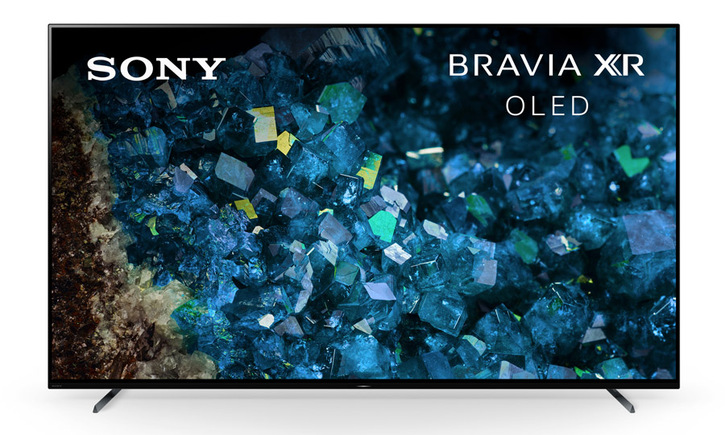
An OLED TV is different. OLED TVs are comprised of self-illuminating pixels. In other words, they do not require a backlight because each individual pixel or dot on the screen acts as its own teeny tiny light bulb. Where an LCD TV puts a shutter in front of the backlight to create "black," an OLED TV simply turns off that specific pixel to create black. An LCD TV is similar to venetian blinds on a window. When the sun is shining, the blinds block out most of the light, but not all of it. Some light creeps around the edges of the blinds. The same is true for LCD TVs.
The main drawback of OLED TVs is their cost. The TV that won the 2023 "TV Shootout" was the Sony A95L OLED TV. A 65-inch version of that TV sells for $3500. When you consider that you can get a massive 98-inch LCD TV for a whole lot less than that, you might start to wonder whether the OLED premium is really worth it. As an aside, the top three TVs in the TV shootout for the last few years have all been OLED TVs. And the differences between them last year was actually pretty subtle. Even the lowest scoring OLED TV in the bunch destroyed the scores of the top-rated LCD TV.
So what's a poor value-conscious TV buyer to do? Spend less on the inferior picture of an LCD TV and suffer with poor black levels and less than perfect image uniformity? Or break the bank on a top-rated OLED TV? Well it turns out there are some OLED choices that do offer excellent picture performance but at a smaller price premium than the top of the line models. And Sony's A80L 4K OLED TV is one of those choices. The 65-inch Sony A80L OLED sells for under $2,000 and offers performance that comes pretty close to its more expensive sibling.
Sony has had a reputation for making excellent TVs since the late 1960s when their first Trinitron color TV went on sale in Japan. It was introduced in the U.S. market in 1969 for $319.95 for a 12-inch model. That's the equivalent of nearly $2700 in 2024 dollars. And people were happy to pay it. Sony's prominence in the TV market has waxed and waned through the years, but the brand has maintained a reputation for top-notch picture quality above all else.
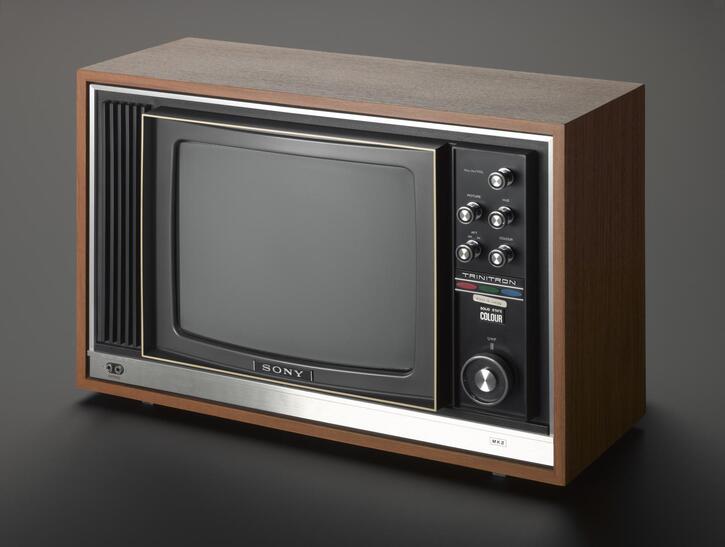
50 years ago, that picture quality lead came from pioneering work with the TV hardware: mainly the electron guns and aperture grilles used in making CRT (Cathode Ray Tube) TVs. As televisions transitioned from analog to digital, Sony's focus shifted to software. The OLED panels used in today's Sony TVs are actually manufactured by LG and Samsung, but it's the software - the video processing technology - that sets Sony apart.
While video processing can't make a panel perform better than its hardware allows, it can directly influence how well a TV handles upconversion from standard definition or high definition content to 4K/Ultra HD resolution. It also influences how well a set handles motion reproduction, how it maps HDR content to its specific hardware capabilities and how accurate the colors are, among other things. With identical hardware, the TV with superior video processing will typically outperform an otherwise similar model from the competition. And when you combine Sony's processing power with a high quality WRGB OLED panel from LG Display, you get the Sony A80L OLED TV.
We spent some quality time with the Sony A80L 4K OLED TV in its 65-inch size (Model XR-65A80L). In my viewing room, setting up the TV involved mounting it on the wall. This was simple enough given its standard VESA 300x300 mounting pattern. VESA 300x300 means the four mounting holes are 300mm (11 3/16 inches) from one another both vertically and horizontally. Of course, Sony recommends its own wall mount, the SU-WL855 ($350). But virtually any mount that supports the VESA 300x300 mounting pattern and can handle the TV's weight (51 pounds) should work fine with this TV.
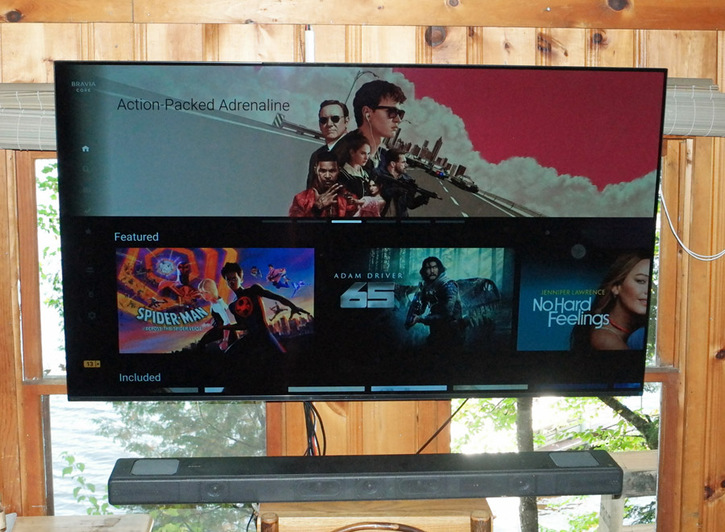
We used the MountUp MU0028 full motion TV stand which is optimized for 16" stud spacing and supports up to 100 pounds. It's available on Amazon for under $50 and worked really well during our evaluation. The four mounting bolts that attach the TV to the mount came with the TV. The stand has adjustable angle and tilt which made it easy to adjust the TV for viewing in different parts of the room.
In terms of picture settings, I made sure to turn off Eco mode, as this can result in less than optimal brightness. Measurement of color temperature confirmed that the TV's "Custom" mode had the most accurate color temperature out of the box (with white closest to 6500K). Visual tests from Spears and Munsil's latest 4K UHD HDR Benchmark disc also confirmed that Custom mode maintained excellent skin tone accuracy overall so I left the TV in Custom mode for most viewing.
The A80L is built on the Google TV platform, which I found to be quick and responsive when navigating in and out of various streaming services and connected devices such as a Sony UBP-X700 4K UHD Blu-ray Player. Both the TV and the player support Dolby Vision HDR making them an excellent match when you want to watch the highest quality physical media.
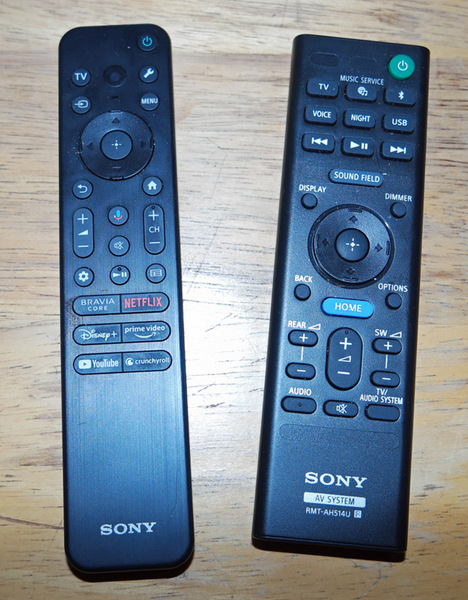
Pairing the TV with Sony's HT-A5000 5.1.2 Soundbar System allowed me to enjoy the simplicity of a (mostly) single remote lifestyle during the duration of the evaluation. All streaming was directly accessed on the TV so no additional remote was required for a separate streaming stick. Volume and mute controls on the Sony TV remote controlled the soundbar but advanced functions like soundfield settings did require the soundbar's own remote.
While GoogleTV includes access to all of the major audio and video streaming services, I found that it does push paid content from Google Play a bit more overtly than Amazon's FireTV platform pushes its native PPV (pay per view) content. It's not excessive, but just realize that sometimes you may be able to find content for free on one of your subscribed services that Google TV tells you is available to "rent or buy."
I tested a handful of apps including Sony's own Bravia Core streaming service, Netflix, Disney+, AppleTV+, Amazon Prime Video, TIDAL and Amazon Music. Most of the apps worked flawlessly, streaming content in 4K with Dolby Atmos but I did have some trouble getting the TIDAL app to work reliably, particularly with Dolby Atmos-encoded music tracks. I found that the app would crash or stop playing a song right away if it was encoded in Dolby Atmos. After a couple of weeks, the TIDAL app started working more reliably (perhaps after an update?), and when it did, I was able to enjoy my Dolby Atmos music playlist on TIDAL, right on the TV. These songs sounded immensely better when the TV was connected to the HT-A5000 Soundbar. But I digress...
The TV also supports Google Assistant with its own built-in far-field microphone. Getting the on-board microphone to work required sliding a mysterious unlabeled switch on the bottom center of the TV (not mentioned in the manual) as well as enabling the microphone in the TV's settings menu. With the Google assistant enabled, I was able to ask the TV important questions like, "What's the Weather?" and "When is the next season of 'House of the Dragon' coming out?" Since I also have an Amazon Echo speaker I was able to compare Google Assistant to Amazon Alexa. Spoiler alert: Google is much smarter than Alexa.
If you want to enable the TV's built-in mic for Google Assistant on a Sony OLED TV, check out this short video clip (made with this specific TV): Enabling Google Assistant on Sony OLED TV.
The Dolby Vision-encoded Ultra HD Blu-ray Disc of "Dune" provided excellent video source material for the A80L. The verdant greens of Caladan and muted beiges and browns of Arrakis were represented nicely on the Sony. And the rich variety of skin tones from peach to brown to olive were all represented realistically. Droplets of perspiration on the skin stood out clearly. When Paul and his mother encounter Fremen in the desert hills in the pale light of the early morning, details in the various bodies and faces were easy to discern. On lesser TVs the details in these faces and shapes are nearly impossible to make out with human forms blending into the rocks behind them.
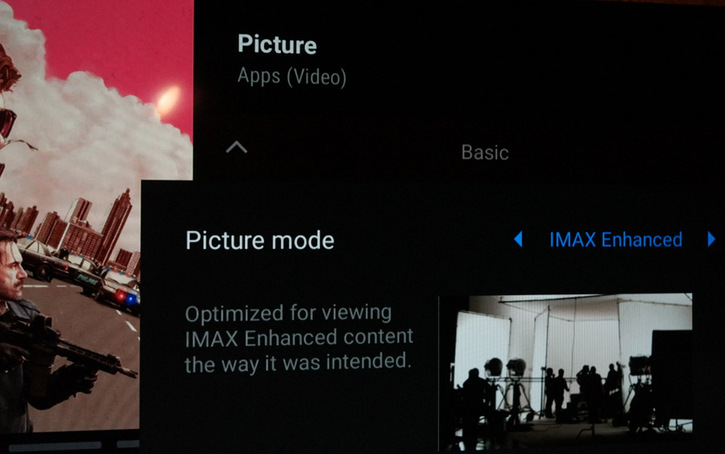
Sony's Bravia Core streaming platform offers some exclusive 4K content, with many titles available in IMAX Enhanced format. These movies looked outstanding on the A80L with the letterboxed 2.35:1 content enlarging to fill the 16:9 screen on certain shots which were composed for IMAX Aspect Ratio. But the Bravia Core service lists as one of its features the ability to stream DTS:X immersive surround. I could not manage to get the IMAX Enhanced content to output DTS:X sound over its HDMI eARC port to the Sony soundbar, though it did put out traditional DTS 5.1 surround as well as Dolby Atmos on compatible content. A Sony rep confirmed that the A80L doesn't handle DTS:X output, though the flagship A95L does. For most content, this isn't really that important as you can almost always find a high quality Dolby Atmos streaming option on these same movie titles.
Switching over to 1080p HD content, I queued up the Blu-ray Disc of "Harry Potter and the Deathly Hallows, Part 2." As the death eaters congregate on a hill near Hogwarts, wizards dressed mostly in black begin their assault on the school. On lesser TVs, the bodies blend into the background, but on the Sony OLED, each wizard stands out in the crowd, their angry features clear in the darkness. On the opposite end of the spectrum, Harry's blindingly bright vision in King's Cross station shows fine details in Harry's and Dumbledore's faces that can get blown out on lesser displays.
When watching HD content like the Harry Potter Blu-ray Discs, the Sony's XR Clear Image processing really shines. Its AI-enhanced processor takes HD and even SD content and upscales it to approach the quality of 4K. Of course, it can't match the wider color gamut of Ultra HD/HDR content, but it improves details in virtually everything it touches, without looking overly processed. While I have a decent collection of 4K Blu-ray Discs and more native 4K content is becoming available on streaming services every week, I still have a pretty large library of Blu-rays and it's nice to be able to watch those without feeling "4K envy."
Switching back over to Ultra HD with "John Wick Chapter 4" streamed in 4K, rich shadow detail was evident in the flickering candlelight of the chapel on the eve of the final duel and the complex texture of the custom 42 regular Kevlar-reinforced suit were visible in exquisite detail. Overall, in this relatively small viewing space, the viewing experience bordered on cinematic.
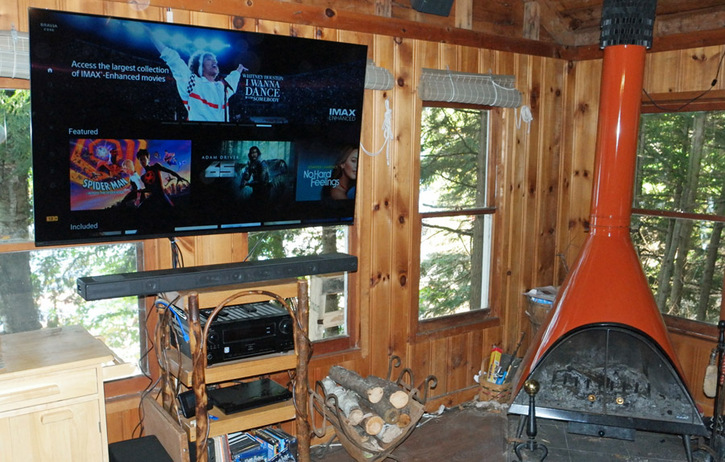
While we always recommend pairing a high quality display like this with a separate audio system (or at least a soundbar), the A80L's built in sound is actually above average for a TV. Sony's Acoustic Surface Audio+ feature uses actuators to turn the entire TV screen into a giant speaker, or really multiple speakers since it uses multiple actuators to position sound on screen to match the visual action. It also uses separate woofers to reproduce bass. The effect is a larger, more expansive soundstage and dialog that is much more intelligible than we hear on most TV's built-in speakers.
If you pair the TV with a Sony soundbar like the HT-A5000 which I reviewed for eCoustics, you can set the system to use the TV's built-in speakers for the center channel, freeing the soundbar to concentrate on the left, right and up-firing height sounds. This allows the dialog to lock to the image very effectively, improving the overall immersiveness of the sound.
Turn Ons:
Turn-Offs:
| Overall | |
|---|---|
| Value | |
| Performance | |
| Features/Ergonomics |